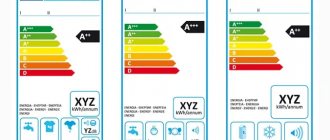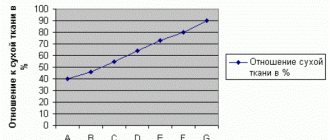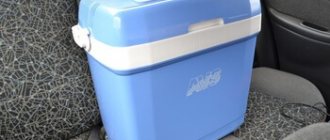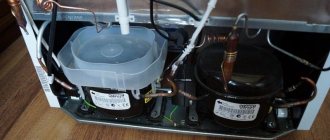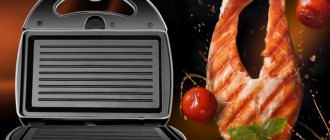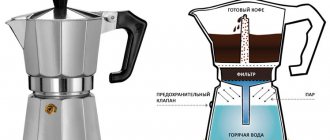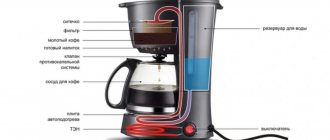When choosing such an extremely necessary household appliance as a refrigerator, the consumer is guided by many nuances. For some, the main priority is the brand, for others the type of freezing and the number of shelves are more important, while others focus on energy consumption and appearance. But not every buyer is aware of such an important parameter of a refrigerator as its climate class. When choosing, it is also important to take it into account and not lose sight of it.
What does the climate class of a refrigerator mean?
There are four climatic classes of refrigerators provided for by generally accepted standards. Foreign manufacturers designate them in Latin letters; they correspond to the climatic zones and temperature conditions possible in the premises (the temperatures indicated, of course, are positive):
- N – 16-32 degrees (normal);
- SN – 10-32 degrees (subnormal);
- ST – 18-38 degrees, high humidity conditions (subtropical);
- T – 18-43 degrees, in a dry climate (tropical).
For Russian buyers, refrigerators of climate classes SN and N are usually offered (domestic designation UHL - cold and moderately cold climate). Versions ST and T are designated in domestic models with the letter O (general climate).
Like other characteristics, these data are indicated by manufacturers on a technical plate, which is pasted inside the refrigerator compartment. Models of classes SN and N can ensure temperature stability inside the chambers (freezing and refrigerating) in our climate. If the design of the product is chosen incorrectly, the refrigerator will not cope, for example, with extreme heat, will work inefficiently, at the limit of its capabilities, and may quickly break down.
Selecting equipment of the appropriate class is important not only to ensure its operation in normal conditions. It is necessary to protect yourself in case of unexpected breakdown of the refrigerator during the warranty period. If the device is used in improper climatic conditions other than those specified in the instructions, the service department may refuse repairs under warranty.
Due to the increasing frequency of natural anomalies, when summer temperatures in our latitudes increasingly rise above 32 degrees, manufacturers have expanded their product line. Now you can buy models with double markings with a range of operating ambient temperatures in degrees:
- SN-ST (16-38);
- SN-T (10-43).
What climate class refrigerator is best to choose?
A successful purchase of a unit is only possible if the buyer complies with the following rules:
- He understands the types of climate control equipment and has studied the markings on the back panel, which are necessary for stable operation of the unit.
- Having chosen the model I liked, I checked its climate control.
- I assessed the temperature indicators: they ensure the smooth operation of the installation.
- After the purchase, I provided conditions for stable operation of the purchased model. Failure to follow the operating rules specified in the instructions leads to damage to the unit. In this case, the warranty does not cover malfunctions caused by negligence.
View » Large refrigerators for home: 13 best models
Premium refrigerators
High-quality units are divided into inexpensive models and luxury equipment.
Premium class refrigerators are characterized by the following distinctive features:
- large dimensions;
- high build quality.
The buyer needs to pay attention to the manufacturer of the product cooling device.
The following brands of premium refrigerators are in demand among consumers:
- Bosch;
- Sharp;
- Samsung;
- Liebherr;
- LG.
Expensive units have the following distinctive features:
- stylish design;
- large freezer volume;
- zigzag refrigerators;
- No Frost system;
- climate regulators for each zone.
Climatic class of the freezer
It’s easy to guess what a refrigerated cabinet means for many buyers: its basic parameters allow you to operate household appliances for a long time. The owner also needs to pay attention to the compliance of the household appliance with the climatic conditions of use.
The following types of refrigeration chambers are used:
- N - normal;
- Sn - subnormal;
- St - subtropical;
- T - tropical.
The equipment is operated at a temperature of +16…+32°C. In a subtropical climate, a device for generating cold is installed in the room, designated O (general climate cooling).
Which climate class of freezer is better?
When purchasing a refrigerator, the buyer first of all evaluates the volume and location of the freezer cabinet.
When choosing a refrigerator, you should pay attention to such parameters as:
- capacity;
- type of freezing;
- energy consumption class;
- power;
- additional options.
A compact chest freezer is installed in a small room, its volume reaches 100 liters. A refrigerator equipped with a No Frost system requires constant maintenance. The food inside the chamber does not freeze, but it must be packaged carefully.
Volumetric cabinets with manual defrosting have a vertical shape and occupy a small area in the room. When choosing a chest, you should evaluate the possibilities of its energy consumption, noise level, and cost of equipment.
What is the difference between units of different climate types?
Refrigeration appliances of different temperature types differ from each other and in their design features. Main differences:
- Compressor power. The higher the air temperature, the more powerful the motor should be. The highest power is for the ST and T units.
- Dimensions of surfaces of condensers and evaporators. The hotter the region, the larger the heat exchange area should be. The largest surface area of heat exchangers is in tropical categories of devices.
- Materials used in production. Subtropical types of equipment are forced to operate in high humidity conditions. This may lead to mold growth. Therefore, the raw materials from which the unit is made must be resistant to mold, rust and rot.
- Thermal insulation thickness. In regions with average temperatures, a large amount of thermal insulation is not required. But if your place is very hot, it is better to choose equipment with good thermal insulation. This technique includes subtropical and tropical types.
- Electricity consumption. The more powerful the equipment, the more electricity it consumes. Equipment with an extended temperature regime has especially high energy consumption. For example, SN-ST.
Characteristics of climate classes and their distinctive features
For convenience, the information is presented in the form of a table of climate classes of refrigerators.
| Class | Class Description | Minimum temperature | Maximum temperature |
| N (UHL) | Normal | 16°С | 32°С |
| SN (UHL) | Subnormal | 10°C | 32°С |
| T(O) | Tropical | 18°С | 43°С |
| ST (O) | Subtropical | 18°С | 38°С |
Design features of refrigerators of different climate classes
- Motor power. The higher the temperature the unit is designed for, the more powerful its compressor. For example, refrigerators of tropical and subtropical classes have compressors of increased productivity.
- Heat exchange area. A temperature class with a higher operating temperature requires a larger heat exchange area. Therefore, refrigerators of classes T and ST have evaporators and condensers with an increased surface area.
- Manufacturing materials. For the manufacture of refrigerators that will be used in humid tropical climates, mold-resistant materials are used.
- A layer of thermal insulation. The lower the ambient temperature at which the refrigerator is intended to be used, the less insulation layer is required. Thus, refrigerators of normal and subnormal classes have less thermal insulation layer than refrigerators designed for tropical and subtropical climates.
- Energy consumption. All other things being equal, universal units designed to operate in a wider temperature range (SN-T, NT) are characterized by higher energy consumption.
What does the climate class of a refrigerator mean for the buyer?
The correct choice of climate class determines how long a home cooling plant will operate without failures or breakdowns. Foreign manufacturers use the IEC standard. Domestic brands and equipment in the CIS countries are marked according to GOST 15150-69.
For convenience, we have collected information on both standards in a common table.
How to use data when choosing a refrigerator
- Assess the climate in the kitchen. Which side of the house is it on, south or north?
- Remember how the old unit behaved in extreme heat. Was he being capricious or did he stop freezing altogether?
- Consider whether the equipment will remain at home until you buy the next one. Maybe in five years he will move to a loggia or summer kitchen?
In stores, most of the assortment is occupied by refrigerators of classes n and sn, but you can also find st. Equipment of normal and subtropical design should only be used at home or in an apartment. Compressors in such models do not have protection against hypothermia.
The subnormal type can safely work on an insulated loggia, veranda, or summer kitchen. The design provides protection for the motor-compressor at temperatures up to +10 degrees.
If you are planning to buy equipment in a foreign market, please note that there are differences in test methods, so the characteristics may differ. In addition, the guarantee will not work in another country.
How do you understand which climate class of an imported refrigerator is best for you if the temperature limits are a little lacking? Pay attention to equipment with dual climate class.
Multi-class refrigerators - what's the difference?
By combining climatic modifications, manufacturers have expanded the temperature limits within which the equipment operates without failure. This is the main advantage of multiclass models.
GOST 15150-69 has no analogues for markings, but this is not required. Initially, the temperature and humidity ranges of domestic equipment are wider than those of foreign ones. This is due to more precise zoning of climatic zones according to GOST 16350-80.
The disadvantages include the price. It has grown due to design changes. We had to add insulation and install reinforced compressors.
The second disadvantage is that the equipment began to require more electricity as the power of the motor-compressor increased.
Type Definition
If you are wondering how to understand what climate type refrigeration equipment belongs to, then you should carefully study the symbols indicated as its markings.
Most often, this designation can be found in the operating instructions or data sheet for the device. Very often, manufacturers of household appliances indicate this mark on a specialized sticker, which can be located on the body of the device itself or located inside the refrigerator compartment.
Reading the markings
Previously, we didn’t even know about the classes of refrigerators - our Minsk, Saratov, Biryusa and other Soviet-era units were produced with such a reserve of compressor power that they could work both on the balcony and in the bathhouse. Current manufacturers are not interested in creating “eternal” devices and install compressors with power limitations on their models.
Each of them operates in a reduced temperature range, which is called the climate class of the refrigerator.
There are four of them in total - in accordance with different indoor conditions. And although family breadwinners often live in kitchens, the air temperature in them can differ markedly in different regions. Those who plan to place the refrigerator in the hallway or on the balcony will also have to pay attention to the climate class.
To finally decide which parameter is best suited for the future operating conditions of the unit, let’s look at what each entry on the label means:
- N – normal class refrigerator. For its correct operation, the room temperature must be maintained in the range of +16..+32°C. This type of equipment is suitable for most apartments and private houses.
- SN - this marking is placed on subnormal class refrigerators. The upper limit for them remains unchanged (+32°C), but the lower limit has dropped to +10. Such equipment will be able to work in the corridor, on an insulated balcony, and even in a dacha, where in winter the heating is set to the minimum level until the owners return.
- ST – subtropical class, allowing the refrigerator to operate at elevated temperatures of +18..+38°C. Relevant for the southern regions.
- T is a tropical class refrigerator, a rare guest in our stores. Designed to work in heat conditions up to +43°C.
Kinds
We can distinguish 4 types of such devices, not taking into account mixed models that combine the features of the main types. The table shows the climate classes of the refrigerator and the temperature range at which the unit will operate with maximum efficiency.
| Climate class | Determination of climate class | Temperature Range | Designation |
| Normal | Middle lane | + 16 – 32 degrees | N |
| Subnormal | Continental | + 10 – 32 degrees | SN |
| Subtropical | Hot climate with high humidity | + 18— 38 degrees | ST |
| Tropical | Hot | + 18 – 48 degrees | T |
The following options act as mixed models:
- SN-T;
- NT;
- N-ST.
N
These refrigerator models can be installed in rooms where the temperature ranges from +16°C to +32°C. In Russia, the climate of the middle zone fits these indications. In the southern regions, it is necessary to install air conditioning in the room. The devices are distinguished by their simple design, reduced electricity consumption, and affordable price.
SN
This is a subnormal or, in other words, an extended range, in which the room temperature can be reduced to 10°C. Models with climate class SN are adapted for work on glazed loggias, balconies, corridors, and in not very heated places.
ST
Refrigerators with a subtropical class can be installed where the ambient temperature ranges from +18°C to +38°C. The electrical circuits are reliably insulated, so they are not afraid of overheating. Contacts are additionally protected from exposure to high humidity. The insulation is impregnated with chemical compounds that prevent fungi and mold from appearing. Buyers of ST class refrigerators living in central Russia should keep in mind when purchasing that if the room temperature is lower than the required temperature, the thermostat and compressor will begin to work poorly.
T
These models are presented in a tropical version. They can be used in regions with a dry climate, where the air warms up to 43°C. The engine in them does not overheat. The freezer is additionally insulated; due to the insulation, ice melting is reduced.
What is the climate class of a refrigerator?
Climate class means compliance of the equipment with the temperature parameters of the room in which the unit will be operated. When installing the product in a room with elevated temperatures, the compressor operates with short breaks, which leads to overheating of the electrical circuits and failure of the electric motor or start relay. The standard establishes ranges with the designations N, ST, SN and T, the information is printed on a nameplate riveted to the equipment body or glued to it.
Previously, the climate class of a refrigerator marked on the equipment meant a single operating zone, but due to the unification of product designs, units with double standards began to be produced. Such devices have an additional margin of safety, which allows them to be used in rooms with poor ventilation conditions and elevated temperatures.
Class N
Normal category (normal), intended for installation in rooms heated to +16…+32°С. The equipment corresponds to the climate of the middle zone; when using devices in the southern regions of the Russian Federation, it is recommended to install an air conditioner in the room. Refrigeration units are characterized by reduced energy consumption (compliance with A+ or A++ requirements); due to the simplification of the design, the cost of the products is reduced.
Class SN
Extended or subnormal range, allowing the room temperature to drop by up to 10°C. Refrigerators are designed for installation in rooms with poor heating conditions (corridors, basement rooms, glazed balconies or loggias). It is not recommended to use the product in rooms with high humidity.
Class ST
Subtropical modifications, adapted for operation at ambient temperatures +18…+38°С.
The electrical circuits are equipped with insulation that can withstand overheating, and contact protection from high humidity is additionally applied.
Insulating materials are impregnated with special chemicals that prevent the formation of mold and mildew. When installing products in the middle zone, it is necessary to provide space heating; when the air temperature drops, malfunctions in the operation of the compressor and thermostat appear.
Class T
The tropical version allows the use of equipment in dry regions with air heating up to 43°C. Changes have been made to the design to allow the motor to operate without overheating. The condenser is equipped with tubes of increased cross-section, which increase the supply of freon and improve heat transfer. The freezer compartment is equipped with additional insulation to reduce ice melting. The equipment is found rarely on the territory of the Russian Federation, and is characterized by increased energy consumption due to an increase in the power of the electric motor of the piston compressor.
Table
Characteristics of climate classes of refrigerators are presented in the table.
| Class name | Abbreviation | Lower threshold of application temperature, °C | Upper threshold of operating temperature, °C |
| Normal | N (UHL) | 16 | 32 |
| Subnormal | SN (UHL) | 10 | 32 |
| Subtropical | ST (O) | 18 | 38 |
| Tropical | T(O) | 18 | 43 |
Models distinguished by double markings
It is not always possible to find refrigeration equipment that is marked with one symbol. Refrigerator manufacturers also produce mixed models. Do not think that such types are universal and can be used in any climatic conditions. Their main difference is in the insulating layer.
The higher the variation in the ambient temperature range, the thicker the insulating layer will be, and there will also be additional fans that increase the efficiency of heat transfer. Accordingly, they consume much more electricity than conventional models.
Mixed models are becoming increasingly popular on the Russian market. This is due to the fact that the autumn-spring period is characterized by low temperatures, and turning the heating on late or early turns off leads to the fact that the room becomes quite cool. In the summer, there is a sharp increase in temperature, and the apartments become very hot.
Equipment Features
Different climate classes of refrigerators differ in their design:
- Compressor power - the higher the temperature range where a certain model is expected to be used, the more powerful the motor should be available. For tropical and subtropical classes, compressors are used that are characterized by high performance.
- Space for Heat Transfer – Refrigerators and freezers that have a higher temperature range have a larger surface area for heat transfer. Class ST or T has condensers and evaporators with a larger area than other models.
- Materials for manufacturing - if such equipment is expected to be used in a hot tropical climate, then the materials must be durable and not susceptible to mold or mildew.
- Thermal insulation layer - the lower the temperature of the room in which the refrigeration equipment is located, the smaller the thermal insulation layer is used for it. Equipment designed to operate in environments with normal and subnormal climates has a much smaller thermal insulation layer than similar models operating in hot weather.
- Electricity consumption - with other parameters being equal, a device that operates in a wide range of temperature conditions (SN-T, NT) consumes much more electricity.
So which climate class of refrigerator is better?
You need to choose the climate class of the refrigerator based on the conditions of intended operation, that is, the temperature and humidity of the room in which the unit will be installed. Knowing the temperature and humidity indicators, it will be much easier to determine the class.
Many may think that it would be better to choose a model with a more universal class, for example, SN-ST or SN-T, since they can be used in the widest temperature ranges. But when choosing such a refrigerator, you should take into account that the price of models with such versatility is higher. It is also important to remember about the higher energy consumption of models with a dual climate class.
If you want to save on buying a refrigerator if you live in a region with a cool climate, the best option to consider would be the option with a normal or subnormal class. These devices will cost less and work well within the ambient temperature range.
In any case, it is better to take into account the climate class of the refrigerator when choosing. This will allow the new device to serve for a long time without various unpleasant surprises.
Which option should you prefer?
When purchasing a refrigerator, be sure to evaluate the conditions in which it will operate:
- what is the temperature in the room, what is the humidity. Naturally, you can choose a multi-class model and not worry about such parameters - for example, choosing the SN-T model. Considering that in Russia the climatic conditions in the cold and hot periods differ very much, such a purchase may be justified (despite the increased cost).
- If you are looking to save money and live in an area with a cool climate, then you can purchase refrigeration equipment that has a normal or subnormal climate class (N or SN). These types are cheaper. If you provide them with the appropriate conditions, they will last a very long time.
Take a responsible and serious approach to choosing the climate class of your refrigerator, and then such equipment will serve you for decades.
Temperature Range
On devices from some manufacturers, climate class indicators vary. The table of standard European designations will help you not to get confused in these indicators.
| Climate Class | The name | Temperature |
| N | Normal | +16-32 oC |
| SN | Subnormal | +10-32 oC |
| ST | Subtropical | +18-38 oC |
| T | Tropical | +18-43 oC |
For some reason, there are very few ST and T class refrigerators in Russia, and if there are, they are very expensive. The most common units are those in the N range, although they can only be used on a third of the territory of the Russian Federation. The domestic manufacturer focuses on devices of type N and SN (designation on the box UHL), more suitable for regions with cold, long winters. It turns out that there is no optimal option for Russia? Fortunately, both our and foreign brands began to produce models with a combined climate class.
| General designation | Temperature Range |
| N-ST | +16-38 degrees |
| NT | + 16-43 degrees |
| SN-ST | +10-38 degrees |
| SN-T | +10-43 degrees |
Individual units can combine 2, 3 or all 4 classes. This is very convenient not only for the home - you don’t have to buy two storage units or a refrigerator with an additional freezer separately - but also for the restaurant business. Such models are more expensive, but the manufacturer gives them a long-term warranty, which allows you to save on repairs. And devices with multi-band pay off faster.
I hope I clearly explained what the climate class of a refrigerator is and why it is better to purchase a model that suits your region.
